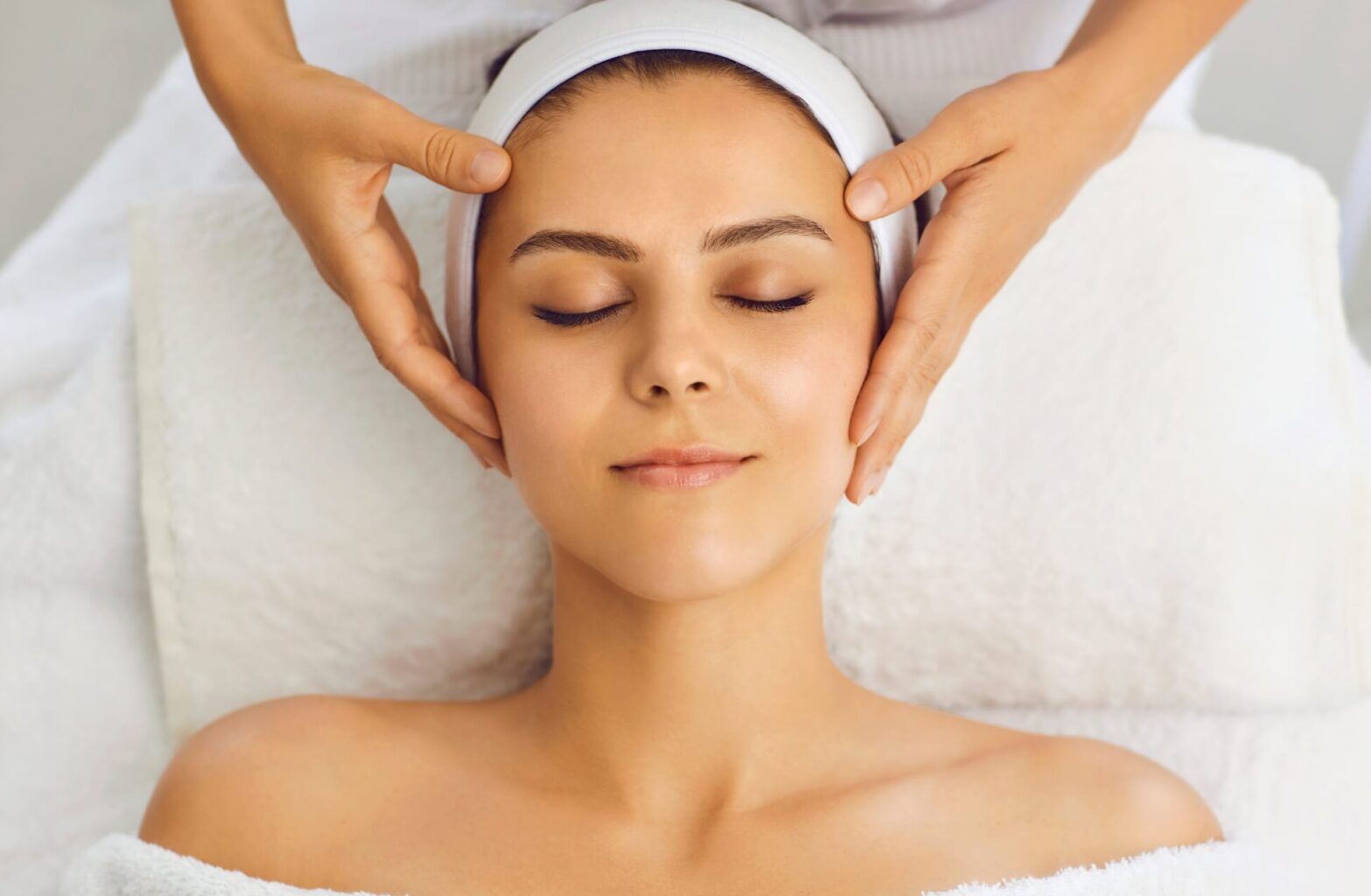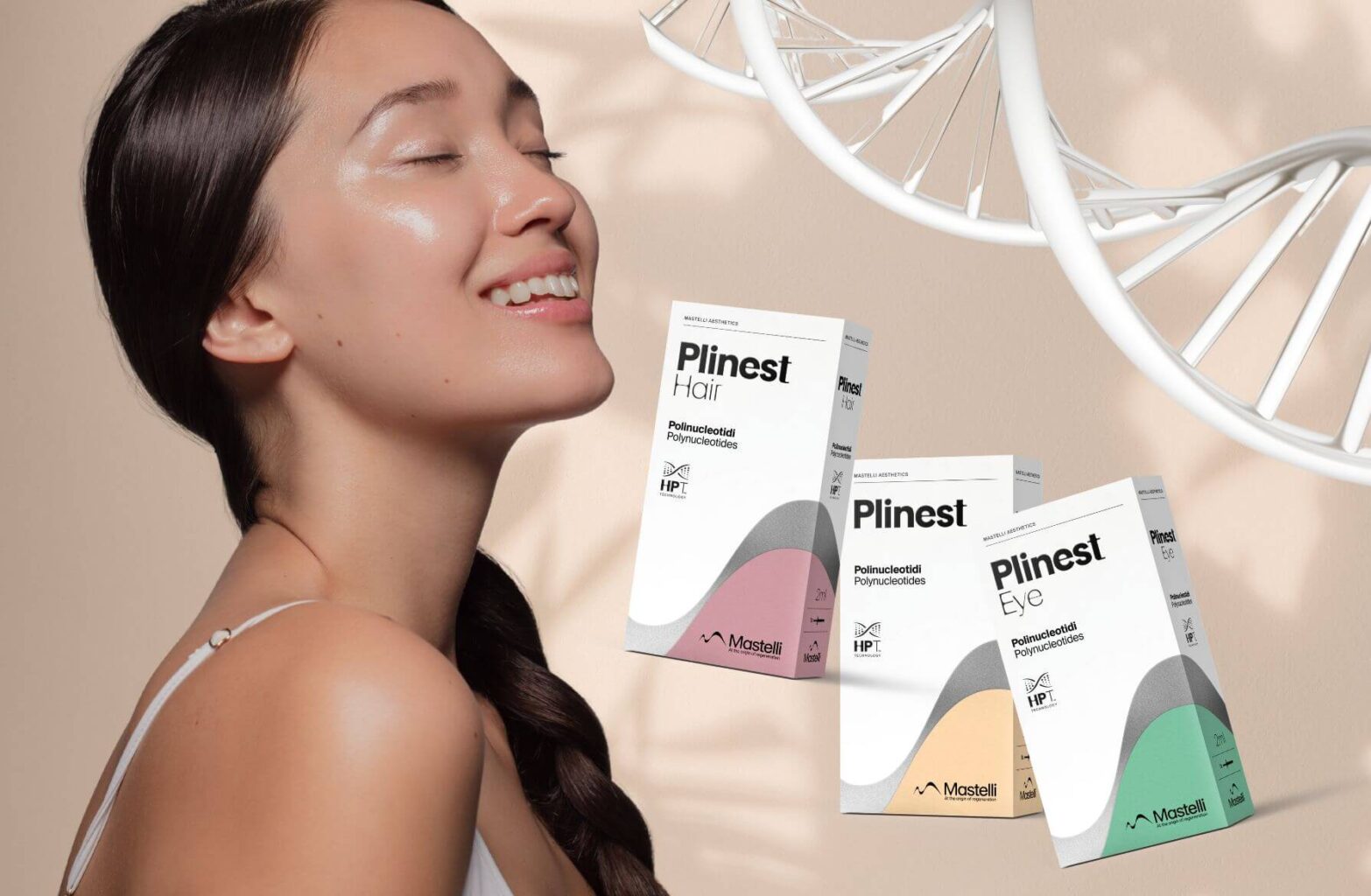Most of us spend hours each day looking at our smartphones, TVs, and computer screens so are all exposed to blue light on a daily basis. And that’s without mentioning the sun emitting blue light (sunlight is actually the main source of blue light and skin damage). But how harmful is blue light to our skin? We spoke to Lorraine Perretta, Head of Nutrition at Advanced Nutrition Programme about blue light and its effects on the skin as well as how we can protect our skin from blue light.
What is blue light and why is it bad for your skin?
Blue light is a type of light that has a short wavelength and a high energy output. It is present in sunlight, but it is also emitted by electronic devices such as computers, smartphones, and televisions.
Blue light is part of the visible light spectrum and has the shortest wavelengths of visible light but the highest energy. Whilst some types of blue light can be beneficial for our health and skin, it can also be harmful, depending on the intensity, duration, and timing of exposure. Independent studies have shown that excess blue light exposure can:
- Trigger the production of reactive oxygen species (ROS) causing oxidative damage to the lipid layer of the skin
- Damage cellular DNA and increase inflammation
- Damage fibroblasts and keratinocytes
- Increase pigmentation
- Increase matrix metalloproteinases (MMPs) which degrade collagen and elastin. This accelerates skin ageing and leads to lines, wrinkles, and skin laxity
“Blue light is a high energy, high-frequency component of the natural light spectrum with a wavelength between 400 and 500 nm,” says Lorraine.
“The impact of blue light on the skin is considerable as it penetrates deeper into the dermis layer of the skin than UV and results in damage to the skin.
“The majority of blue light comes from the sun. Up to 30% of sunlight is composed of blue light, while UV is only 5%. However, many individuals are often more focused on the blue light from electronic devices.
“Research into blue light damage to the skin shows sunlight contributes 96% of the damage while digital devices only contribute 4% of the damage.”
What does blue light do to you and your skin?
“Blue light therapy, when administered by a skincare professional, may be beneficial to the skin,” says Lorraine. “Blue light can be used as part of acne treatment through a mechanism of killing certain bacteria on the surface of the skin.”
“However, blue light exposure, especially from the sun, has a negative impact on the skin – it can contribute to damaging collagen and elastin, which may result in fine lines, deep wrinkles, and sagging skin. Melanocyte cells can also be damaged, which contributes to discolouration, brown spots, and pigmentation.”
How does blue light damage the skin?
Research has shown that blue light can penetrate deep into the skin and cause damage to the cells. Specifically, blue light has been shown to cause oxidative stress, which is a process that damages cells and can lead to premature ageing. This damage can manifest itself in a variety of ways, including wrinkles, fine lines, and dark spots.
In addition to causing oxidative stress, blue light can also disrupt the skin’s natural barrier function. This can lead to increased water loss and dehydration, which can make the skin appear dull and dry.
How does blue light affect your face?
Lorraine says blue light can damage the skin and actually speed up the ageing process. “Blue light can seriously impact skin structures including fibroblasts, keratinocytes, melanocytes, and the protective lipid layer. Fibroblasts and keratinocytes are two of the most abundant cell types present in the skin. They secrete collagen proteins that help maintain the structural framework of tissues. Blue light damages these skin cells, which results in lines and wrinkles forming and accelerating skin ageing.
“Melanocytes are another type of skin cell targeted by blue light. Melanocytes are a cell in the skin that produces and contains the pigment called melanin. When they are damaged, they cause discolouration, pigmentation, and brown spots.
“In addition to this, blue light can damage the lipid layers between skin cells. When the lipid layers are damaged it compromises the skin barrier function, causing skin to be red, reactive, and sensitive.”
What devices emit blue light?
There are several electronic devices that emit blue light, including: computer screens, laptop, smartphones, tablets, televisions, gaming devices, and e-readers But digital clocks as well as LED and fluorescent light bulbs also emit blue light.
These devices emit blue light because they use LED (light-emitting diode) or LCD (liquid crystal display) screens, which produce blue light as part of their display technology.
While exposure to blue light from these devices is generally considered very low, prolonged and frequent exposure can have negative effects on our health, including disrupted sleep patterns and potential skin damage.
Lorraine says it’s important to realise that the majority of blue light exposure comes from the sun. “The majority of blue light comes from the sun, yet individuals are more focused on the blue light from electronic devices including phones, laptops, lighting and television screens.”
Is blue light from our mobile devices causing skin damage?
The largest source of blue light is sunlight, but is also emitted from digital devices. The current thinking of researchers suggests artificial blue light contributes to only 4% of damage to your skin whereas sun exposure contributes 96% of the damage.
Lorraine says: “We know that too much natural blue light can damage skin, however, research showcasing the impact of blue light from devices is inconclusive. However, many researchers highlight that enough research hasn’t been done on the long-term cumulative effects of using our devices.
“Consistent with our foundation in solid science, Advanced Nutrition Programme skin experts have considered the impact of all sources of blue light exposure on the skin when developing our new Skin Blue Filter to protect your skin from within.”
Can you reverse blue light skin damage?
Lorraine says blue light skin damage can be reversed. “Our 8-week pre-clinical study results showed that the potent antioxidant combination found in Skin Blue Filter not only protects the skin against blue light damage by up to 60% but also repairs the damage to the skin from blue light exposure.”
How can we protect and treat ourselves from blue light damage?
Lorraine says we can protect our skin from blue light by remembering that the human body is a two-sided organ and we need to protect the skin from within as well as the outside.
“The skin is the largest organ of the body, but it is also a two-sided organ. If you only use SPF on the outside (on your skin), you’re only treating half of the problem.
“To protect your skin from blue light damage, our skin researchers always recommend applying SPF to protect the outside and combine this with the Skin Blue Filter supplement to protect your skin from the inside.
“Topical SPF only works where applied on the skin while SBF (Skin Blue Filter) works on every skin cell from head to toe. SPF can often be rubbed off and needs to be applied regularly while SBF is constantly working and protecting the skin.
“Our skin researchers have selected five key ingredients in this innovative supplement based on published literature demonstrating the ingredients that protect and repair the skin from blue light. These five ingredients are vitamin e, olive Fruit extract, lutein, zeaxanthin, and biotin.
“Results from our 8-week pre-clinical study showed Skin Blue Filter protects the skin against blue light damage by up to 60%. Additionally, participants experienced a 19% decrease in redness, 17% improvement in hydration and a 16% decrease in wrinkles.”

Skin Blue Filter Supplements To Protect Skin From Blue Light
Consistent with Advanced Nutrition Programme‘s foundation in pioneering science, their skin researchers focused on the impact of natural, environmental blue light exposure on the skin when developing Skin Blue Filter, rather than on devices. As a result, they’ve created a specialist supplement, for all skin types, to protect our skin and overall health from within.
Skin Blue Filter shields skin from within with a synergy of cell-
protecting nutrients, including a team of targeted antioxidants to provide elevated protection and anti-inflammation benefits.
During their pilot study of 56 days with a total of 16 people (13
women and 3 men), the following results were achieved:
hydration improved by 17%, 16% improvement in wrinkles and
redness decreased by 19%.
Advanced Nutrition Programme’s skin researchers recommend taking one capsule per day with a main meal. Skin Blue Filter works with all supplements so can be added as a booster to any existing women’s supplement regime.
The new supplements for blue light skin protection are for all skin types and ages, particularly anyone looking for age prevention, challenged with light sensitivity, inflammatory skin conditions, high-environmental exposure and during spring/ summer.




